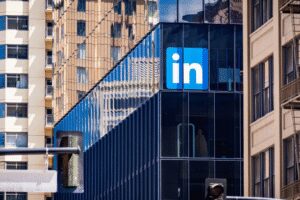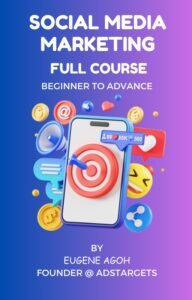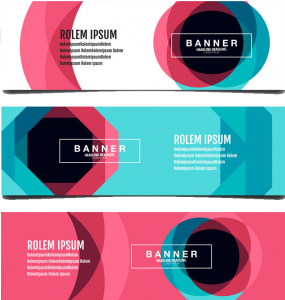When most people think about running ads online, two names usually pop up first: Google and Facebook. They’re the giants, and both experienced advertisers and complete beginners often jump straight to them as their go-to traffic sources. But here’s the thing — because everyone’s using them, the competition is fierce, the costs can get high, and it’s harder to stand out.
That’s why exploring alternatives to Facebook Ads can be such a smart move. These alternative platforms are often less crowded, which means cheaper clicks, better visibility, and in many cases, access to fresh audiences you won’t easily reach on Facebook. For example, you might find platforms that work amazingly well for mobile apps, video campaigns, niche communities, or even global markets outside the U.S.
In this article, we’ll walk you through the best alternatives to Facebook Ads for 2025. We’ll break down what makes each platform unique, who they’re best for, how much they cost, and what kind of results you can expect. Whether you’re just starting out or you’ve been advertising for years, these options could open the door to untapped traffic sources — and give your campaigns a real edge.
Table of Contents
ToggleWhat is Social Media Advertising?

Social media advertising is any kind of paid promotion that shows up on platforms like Facebook, Instagram, Twitter (X), TikTok, LinkedIn, and more. In simple terms, it’s when businesses pay to put their message in front of people who spend time on social networks.
This could be as small as a single promoted tweet or Instagram story, or as big as a full-scale campaign on Facebook with videos, carousel ads, and a large budget. Each platform has its own style, targeting tools, and audience reach. For example, LinkedIn is great for professionals, TikTok is perfect for short-form videos, while Instagram focuses heavily on visuals.
Now here’s the catch: while Facebook is the giant in this space, it’s not the only option. Exploring alternatives to Facebook Ads can help you reach audiences where your competitors might not be looking. Some networks are less crowded and cheaper, while others specialize in niches (like TikTok for Gen Z or LinkedIn for B2B campaigns).
That’s why many smart advertisers are experimenting with these alternatives to Facebook Ads — because spreading your ad budget across different platforms can lower costs, increase reach, and uncover hidden opportunities that Facebook alone can’t provide.
Why Look for Facebook Alternatives?
Facebook is huge — with over 2.89 billion monthly active users, it’s one of the best platforms for targeting just about any audience segment. Its advertising system is powerful, offering tools like instant forms to capture leads without people ever leaving the app. On paper, it looks perfect.
But here’s the reality: not every audience reacts well to Facebook ads. In some countries, Facebook feels more like LinkedIn — a place for business conversations. That means entertainment-style ads don’t always perform well there, even if they do great on other platforms. On top of that, Facebook has strict rules about which industries and ad categories are allowed, which can limit your options.
That’s why smart marketers look for alternatives to Facebook Ads. Even if you’ve mastered Facebook and know your audience, scaling your campaigns often requires reaching people on other platforms too. By testing out alternatives to Facebook Ads, you can:
#1. Find fresh audiences who aren’t as active on Facebook.
#2. Lower your costs by advertising in less competitive spaces.
#3. Increase visibility across multiple platforms instead of relying on one.
In simple terms: Facebook is powerful, but it shouldn’t be your only tool. To really grow, you need to spread your efforts to other social networks and traffic sources.
Why Look for Facebook Alternatives?
There’s no denying it — Facebook is a giant. With more than 2.89 billion monthly active users, it offers some of the most advanced audience targeting tools in the world. You can reach almost any group of people, and features like instant forms make it easy to capture leads without visitors leaving the app.
But here’s the catch: just because the audience is there doesn’t mean they’ll always respond. In some countries, people treat Facebook more like LinkedIn — a space for business updates and networking — which means light, entertainment-style ads don’t always perform well. Add to that Facebook’s strict ad category restrictions, and suddenly your options as an advertiser can feel limited.
That’s why it’s smart to explore alternatives to Facebook Ads. Even if you’ve mastered Facebook’s system — knowing your audience, the content they like, and the headlines that make them click — there’s still room to grow. Other platforms can give you cheaper ad costs, untapped audiences, and more flexibility in what you promote.
By testing alternatives to Facebook Ads, you spread your reach, increase visibility, and avoid putting all your eggs in one basket. In simpler terms: Facebook is powerful, but relying only on it is like only playing one sport when you could be winning in many.
10 best Facebook ads alternatives
#1. LINKEDIN ADS

When people talk about alternatives to Facebook Ads, LinkedIn often comes up first — especially for businesses that sell to other businesses (B2B). LinkedIn is trusted, professional, and powerful: in fact, it was voted the most trusted social network in 2021 and drives more than 46% of all social media traffic going to company websites.
So, why do marketers love it? Unlike Facebook, LinkedIn users are there mainly for career growth, networking, and business opportunities. That means your ads are more likely to get noticed if they help someone’s work life or business goals. Entertainment-style ads might flop here, but educational content, services, or tools that make business easier can thrive.
Here are the main ad formats you’ll find on LinkedIn:
Text ads – Small ads shown in the feed or sidebar.
Sponsored content – Ads that look like regular posts in your feed, but with a “Promoted” label.
Video ads – Sponsored content but in video form, letting you explain more in less time.
Carousel ads – Swipeable cards that let you tell a story across multiple slides.
Things to keep in mind:
#1. LinkedIn ads are often more expensive than Facebook. The minimum cost-per-click (CPC) starts around $2.
#2. They work best if your product or service has a high customer lifetime value (above $5,000 is ideal), but with the right skills, you can still run profitable campaigns at lower values.
#3. Because the audience is professional, you need to craft ads that speak to careers, skills, and businesses.
In short, LinkedIn might not be for every product, but if you’re serious about B2B marketing, it’s one of the smartest alternatives to Facebook Ads you can try. Think of it as Facebook’s business-savvy cousin — pricier, yes, but with the right pitch, the payoff can be big.
#2. TIKTOK ADS

When people think of alternatives to Facebook Ads, TikTok is quickly becoming one of the hottest options. With over 1 billion active users worldwide, this video-first platform is no longer just for teenagers — global brands like Red Bull, Ralph Lauren, and BMW are already using it to reach young, energetic audiences.
TikTok stands out because it’s built entirely around short, engaging videos. This makes ads feel more like part of the fun rather than obvious interruptions. Plus, TikTok gives advertisers unique tools like custom stickers, filters, and effects to make campaigns more interactive and creative.
Here are the main ad formats you can use on TikTok:
#1. Brand Takeover – A bold, full-screen image or GIF that appears the moment someone opens the app.
#2. Branded Hashtag Challenge – One of the most engaging formats. Brands invite users to join a challenge (like a dance, trick, or theme) with a special hashtag.
#3. TopView Ads – Similar to Brand Takeover, but with videos instead of images.
#4. In-Feed Ads – Ads that look like normal TikTok posts and appear while users scroll. This is the most cost-friendly format for smaller businesses.
#6. Branded Effects – Interactive effects, filters, or AR features that let users play with your brand in their videos.
Good to know:
TikTok’s main audience is 18–34, making it perfect for B2C products and services.
Ad costs vary depending on the format. In-Feed Ads are the cheapest option for smaller campaigns.
You need a minimum budget of $500 per campaign and at least $50 per ad group.
TikTok supports different bidding models: CPC (Cost per Click), CPM (Cost per Mille/1000 impressions), CPV (Cost per View), and oCPC (Optimized CPC). With oCPC, TikTok studies your audience and shows ads to people most likely to take action — meaning better use of your budget.
In short, TikTok is more than just a place for fun dances — it’s a powerful stage for brands. As one of the fastest-growing alternatives to Facebook Ads, it allows you to blend creativity with reach, capturing attention in a way that feels natural and engaging.
#3. DISPLAY AD NETWORKS
Think about why people love TikTok — it’s fun, interactive, and feels personal. Or why mobile apps feel so smooth — they’re simple and uncluttered. Now imagine if online ads could feel the same way.
With over 1.5 billion weekly impressions, Social Bar ads let advertisers grab attention in a way that feels natural and engaging, not annoying. While Facebook or TikTok keep people locked into their apps, display ad networks spread your ads across thousands of trusted websites. This makes them one of the smartest alternatives to Facebook Ads, giving you a chance to reach people wherever they browse.
Here’s why Social Bar and display ads are worth trying:
Massive reach – Millions of impressions daily, pulled from popular platforms like TikTok and Facebook.
Target any niche – Perfect for SaaS products, eCommerce stores, apps, small businesses, and even demand generation campaigns.
Multiple formats – Choose from native ads, pop-unders, in-page push ads, and more, all with one platform.
High engagement – Ads feel “built in” (native) instead of disruptive, so users are more likely to notice and click.
In short, with Social Bar campaigns, you don’t just rely on social networks — you diversify. And if you’re serious about finding alternatives to Facebook Ads, display ad networks like adstargets.com give you the scale, flexibility, and global reach you need to keep your brand visible everywhere people spend time online.
#4. TWITTER ADS
If TikTok’s price tag feels too high (running campaigns there can cost between $10,000 and $50,000), then Twitter might be a more budget-friendly option to consider. As one of the most widely used platforms for both personal chats and business conversations, Twitter opens the door for brands to promote a wider range of products and services compared to LinkedIn or TikTok.
What makes Twitter special is its targeting power. Unlike most platforms, hashtags are still alive and thriving here. That means you can directly target people who’ve tweeted, liked, or searched for specific hashtags or keywords in the last seven days. This is a huge plus for advertisers looking to connect with niche communities or trending conversations.
Here are the main ad formats on Twitter:
Promoted Tweets – These look just like normal tweets, but they carry a “Promoted” tag. They can cost between $0.50 and $2 per action (like a click, retweet, like, or follow).
Promoted Accounts – Instead of boosting a single post, you can promote your whole profile. Your account appears in timelines, search results, and the “Who to Follow” section. These ads usually cost between $2 and $4 per new follower.
Promoted Trends – These are the most expensive. Your brand appears in the “Trends for You” section on the Explore tab, giving you huge visibility.
Good to know:
Twitter has 330 million active users worldwide.
Best for both B2B and B2C companies.
Main audience: 23–34 years old (strong bases in the USA, Saudi Arabia, Europe, and Asia Pacific).
Affiliate marketing is allowed.
Effectiveness is considered medium — great for conversations and awareness, but it requires skill to scale profitably.
In short, Twitter is one of the classic alternatives to Facebook Ads. It’s more affordable than TikTok, offers laser-focused hashtag targeting, and gives brands a platform where conversations move fast. If you want to experiment with alternatives to Facebook Ads that keep you plugged into global discussions, Twitter Ads should definitely be on your radar.
#5. QUORA ADS
Quora isn’t just a place for people to ask questions and get answers — it’s also a hidden gem for advertisers. With over 300 million monthly users, Quora has become a platform where people actively look for knowledge, solutions, and recommendations. That makes it one of the smartest alternatives to Facebook Ads, especially if you want to reach curious, research-driven audiences.
The magic of Quora is simple: people are already asking questions about specific products, services, or industries. As a business, you can step in with helpful answers while promoting what you offer — making your ad feel more like a solution than a sales pitch.
Here are the main Quora ad formats you can try:
Image Ads – Standard ads with a headline, description, image, and link to your landing page. You can target these to show under certain topics, questions, or keywords.
Text Ads – Since Quora is mostly text-based, these ads blend in naturally with the platform’s conversations. Great for building trust while sharing your brand message.
Promoted Answers – Perfect if you want to boost visibility for an answer you’ve already written. These are usually cheaper than other ad types and give your expertise more exposure.
Good to know:
Audience size: 300M active monthly users, mostly in the US.
Best for mid-priced products and services.
Cost: Promoted answers start as low as $0.10 CPC, making them budget-friendly.
Affiliate marketing is allowed.
Effectiveness: High — especially when your ads align with active discussions.
The big advantage of Quora Ads is that competition is still low compared to Facebook or Google. But here’s the catch: your product or service must fit the platform. If there aren’t enough questions in your niche, your ads might not get traction.
Still, if you want alternatives to Facebook Ads that let you meet users right at the moment they’re searching for answers, Quora is a powerful option. Think of it as running ads where people are already raising their hands and saying, “I need help with this.”
#6. REDDIT ADS
Reddit is like a giant online city with more than 100,000 neighborhoods (called subreddits), each dedicated to a specific interest. From gaming and tech to fitness, travel, or even niche hobbies, there’s a subreddit for almost everything. With over 430 million monthly active users, Reddit has the scale to compete with big platforms, making it one of the more underrated alternatives to Facebook Ads.
But here’s the catch: Reddit’s audience is very vocal and opinionated. Users can be skeptical of brands, so if your ads feel too pushy or irrelevant, they’ll let you know with downvotes or negative comments. To succeed here, you need to be strategic — focus on relevance, authenticity, and adding value to the conversation.
Here are the main ad formats you can run on Reddit:
Promoted Posts – These look just like regular Reddit posts, but they’re pinned to the top of a subreddit. They can spark engagement, but remember, people can upvote or downvote them. That’s why placement in the right community is crucial.
Display Ads – These appear in the sidebar, but they require a higher budget. You’ll need a Reddit account manager and at least $50,000 quarterly spend to access this format.
Good to know:
Audience size: 430M+ monthly users, mostly aged 18–29.
Main markets: North America, Europe, and Australia.
Cost: CPC starts at $0.75, making it accessible for smaller budgets.
Affiliate marketing is allowed.
Effectiveness: Medium — depends heavily on how well you match your message with the right subreddit.
The real strength of Reddit Ads is community targeting. Unlike platforms that throw your ads into broad audiences, Reddit lets you reach people who are already obsessed with a topic related to your product or service. That’s why, for brands who know their niche well, Reddit can be one of the smartest alternatives to Facebook Ads — because it lets you join the conversation where it’s already happening.
#7. PINTEREST ADS
Pinterest is a little different from other platforms — it’s both a social network and a search engine rolled into one. People go there not just to browse, but to discover ideas, save inspiration, and plan their next project or purchase. That’s what makes Pinterest Ads so powerful: users are already in “shopping mode” when they land on the platform. For advertisers, this makes Pinterest one of the most creative and effective alternatives to Facebook Ads.
The key to winning on Pinterest is visuals. High-quality images or short videos are what grab attention here. If your team can create eye-catching content, Pinterest can turn those pins into real clicks, sales, or downloads.
Here are the main ad formats you can run on Pinterest:
Promoted Pins – These blend right into the Pinterest feed, looking like regular pins but with extra visibility.
Shoppable Pins – Let users buy your products directly from Pinterest, without leaving the app.
Promoted Video Ads – Videos that appear in feeds, search results, or under “More like this.” Great for storytelling.
App Install Ads – Special pins that let people download apps directly from iOS or Android devices.
Good to know:
Audience size: 322M monthly active users, mostly in North America.
Target audience: 18–49 years old, especially shoppers interested in holidays, food, home décor, and DIY projects.
Cost: CPC ranges from $0.10 to $1.50, making it one of the more affordable ad platforms.
Affiliate marketing is allowed.
Effectiveness: High — especially for eCommerce brands selling lifestyle, home, or seasonal products.
If your brand lives on visuals — whether it’s fashion, food, holidays, or home décor — Pinterest is a perfect fit. It’s not just about likes or shares; it’s about inspiring people and nudging them toward purchases. That’s why many marketers see Pinterest as one of the best alternatives to Facebook Ads, especially when they want to reach buyers in the discovery and planning stage.
#8. INSTAGRAM ADS

Even though Instagram is owned by Facebook, the platform feels very different. Instagram is all about bold, eye-catching visuals — photos, short videos, and stories that inspire. That’s why brands that thrive on aesthetics (like food, fashion, or fitness) often find Instagram Ads more effective than Facebook. It has quickly become one of the top alternatives to Facebook Ads, especially for businesses targeting younger, mobile-first audiences.
On Instagram, your ads don’t just sit on the side — they blend right into the flow of content people are already scrolling through. The trick to success here is creative quality. If your images and videos stand out and tell a story, people are far more likely to stop, click, and engage.
Here are the main ad formats on Instagram:
Stories Ads – Short, full-screen ads that appear between Instagram Stories. They’re seamless and often feel like organic content.
In-Feed Photo or Video Ads – Ads that show up directly in a user’s feed. They’re a bit pricier but deliver strong engagement.
Carousel Ads – Allow you to showcase multiple photos or videos in a single swipeable ad. Great for storytelling or showing product ranges.
Collection Ads – A mix of a main cover image/video plus smaller product images. When tapped, it opens a full-screen shopping experience.
Explore Ads – Ads that appear in the Explore section where users go to discover new content.
Good to know:
Audience size: Over 1 billion monthly active users worldwide.
Target audience: Mostly 18–34 years old.
Cost: CPC ranges from $0.50 to $3 depending on placement and targeting.
Affiliate marketing is allowed.
Effectiveness: High — especially for consumer products with strong visual appeal.
At the end of the day, choosing between Facebook and Instagram ads depends on your audience. Facebook leans more toward text and detailed content, while Instagram is built for quick, visual storytelling. If you’re looking for alternatives to Facebook Ads that let you showcase your brand in a visually stunning way, Instagram Ads should be at the top of your list.
#9. YOUTUBE ADS
YouTube isn’t just for music videos and funny clips — it’s actually the second-largest search engine in the world, right after Google. With billions of people watching daily, it’s one of the most powerful places for brands to advertise. If you’re looking for alternatives to Facebook Ads that give you unmatched reach and attention, YouTube is at the very top of the list.
The beauty of YouTube Ads is that they put your brand right where people are already spending their time: watching videos. Whether it’s tutorials, reviews, entertainment, or news, your ads can appear before, during, or after the videos your audience cares about most. And since YouTube is so massive, you can target just about anyone, anywhere.
Here are the main YouTube ad formats you can run:
TrueView Ads – Ads you only pay for when someone actually chooses to watch (great for keeping costs efficient).
Skippable In-Stream Ads – These play before or during videos, but viewers can skip them after 5 seconds. Perfect for grabbing quick attention.
Non-Skippable Ads – Short ads (usually 15–20 seconds) that viewers must watch before their video continues. Strong for brand awareness.
Good to know:
Audience: 18–55 years old, with users worldwide.
Cost: CPV (cost per view) starts as low as $0.01, making it very budget-friendly.
Affiliate marketing is allowed.
Effectiveness: High — especially when ads are engaging and targeted well.
YouTube Ads are all about storytelling. Unlike static images or quick posts, video gives you room to explain, entertain, and inspire. For brands that can invest in creative content, YouTube is one of the most rewarding alternatives to Facebook Ads, letting you connect with audiences in a way that feels personal and memorable.
#10. SNAPCHAT ADS
Snapchat might not get as much hype as TikTok or Instagram these days, but it’s still the sixth most popular social media platform in the world. If your target audience includes Gen Z and younger Millennials, Snapchat Ads give you a direct way to reach them with fun, interactive, and creative content. That’s why many marketers see Snapchat as one of the more playful and effective alternatives to Facebook Ads.
The big win with Snapchat is engagement. People don’t just scroll; they interact by sending snaps, using filters, and watching quick stories. Ads are woven right into these behaviors, making them feel natural instead of forced. This means brands can drive traffic, boost app installs, or even get views for longer video content without breaking the user experience.
Here are the main ad formats Snapchat supports:
Sponsored Geofilters – Custom filters that users can add to their snaps within a set location.
Snap Ads – Short, vertical video ads (up to 10 seconds) that appear between snaps, often with a “swipe-up” option for more content.
Single Image or Video Ads – Straightforward, simple ads to grab attention fast.
Collection Ads – Perfect for showcasing multiple products in one ad.
Story Ads – Ads placed within Snapchat’s Discover section, blending with other stories.
Lenses & Filters – Fun, interactive AR tools that let users “play” with your brand.
Commercials – Non-skippable, short ads to guarantee full attention.
Dynamic Ads – Personalized ads that update automatically based on your product catalog.
Good to know:
Audience: Mostly 26–35 years old, but strong with Gen Z.
Cost: CPC starts around $2.95.
Affiliate marketing is allowed.
Proficiency level: Medium.
Effectiveness: Medium, but very strong for the right demographics and creative campaigns.
At the end of the day, Snapchat isn’t for everyone — but if your brand wants to connect with younger audiences in a fun and interactive way, it’s a powerful option. Among the many alternatives to Facebook Ads, Snapchat stands out for its creativity, youthful energy, and ability to make ads feel like part of the conversation instead of an interruption.
Conclusion
Facebook is still huge, but relying only on it for ads is like eating the same meal every single day — sooner or later, you miss out on other great flavors. With so many platforms available today, sticking to Facebook alone is a serious oversight. The smartest advertisers are diversifying their budgets and testing new channels to find what works best for their audience.
The good news? There are plenty of alternatives to Facebook Ads that can deliver even better results depending on your goals:
Quora Ads work beautifully if you want to target people actively searching for answers.
Instagram Ads are perfect for boutiques, fashion, food, and lifestyle brands that thrive on visuals.
TikTok Ads give big brands unmatched engagement with Gen Z audiences.
Display Ad Networks are powerful for apps, sweepstakes, VPNs, or sales-focused campaigns, thanks to their massive reach.
The lesson is simple: don’t limit yourself. Experimenting with alternatives to Facebook Ads helps you discover untapped traffic sources, grow your reach, and protect your ad strategy from over-dependence on one platform. The more you diversify, the more resilient and profitable your campaigns become.








